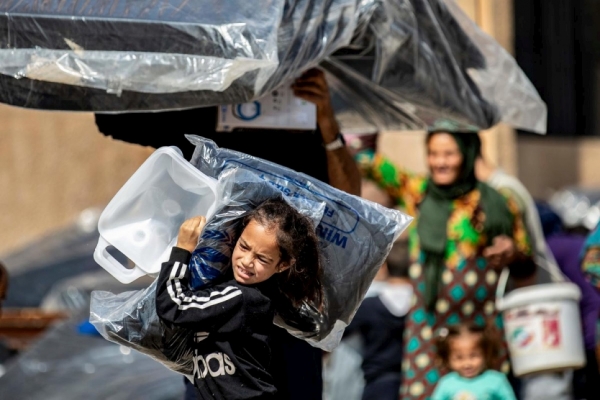According to the IDMC, conflict and violence in the region triggered 2.6 million new displacements only in 2019. Similarly, around 12.5 million people were living in internal displacement due to conflict and violence in the region as of the end of the year (IDMC, 2020).
Overall, the Middle East and North Africa region (MENA) also accounts for more than a quarter of people internally displaced by conflict and violence globally. Most specifically, the majority of these internal displacements concentrates in five countries that have been afflicted by protracted conflict and/or violence: Syria, Yemen, Iraq, Palestine and Libya (IDMC, 2020).
In Syria, IDMC’s figures demonstrate how the conflict constitutes a major driver of internal displacement, causing 1.8 million new displacements mostly due to military offensives in the north-east and north-west of the country in 2019. Similarly, around 6.5 million people were living in internal displacement as of the end of the year. Another 5.6 million people have fled the country, meaning that the majority of its pre-war population has been forced to displace (IDMC,2020).
In Yemen, 398,000 new displacements were prompted by Conflict and violence in 2019 - almost double the figure for the previous year (IDMC,2020). The majority of displacements occurred in Al Dhale, Hajjah and Hodeidah governorates. Moreover, many of the affected population had already experienced forced displacement; hence any new displacement increased their vulnerabilities and further exacerbated their living conditions (IDMC,2020).
Similarly, the conflict between the Libyan National Army (LNA) and the UN-backed Government of National Accord (GNA) in Tripoli escalated in 2019, triggereing 215,000 new displacements - three times the figure for the previous year and the highest since 2014 (IDMC,2020). Moreover, lmost a half of the internally displaced people in the country were under 18, rendering this category particularly vulnerable and subject to further challenges (IDMC,2020).
Furthermore, the West Bank, East Jerusalem and Gaza experienced 1,500 new displacements in 2019, such that IDPs figures in Palestine as of the end of the year amounted to 243,000 (IDMC,2020). In particular, among the drivers of displacement, forced evictions, housing demolitions the confiscation of property and acts of violence perpetrated by Israeli settlers and the military forced people to flee their homes in the West Bank and East Jerusalem (IDMC,2020).
Finally, IDMC figures portray a declining trend in Iraq. In fact, conflict in Iraq waned in 2019, decreasing the number of new displacements to 104,000 as of the end of the year. Thus, the number of internally displaced people as of the end of 2019 fell to 1.6 million from two million in 2018 and 2.6 million in 2017 (IDMC,2020).




